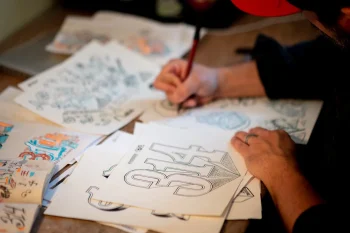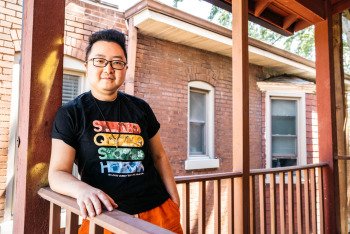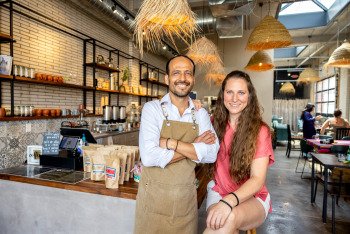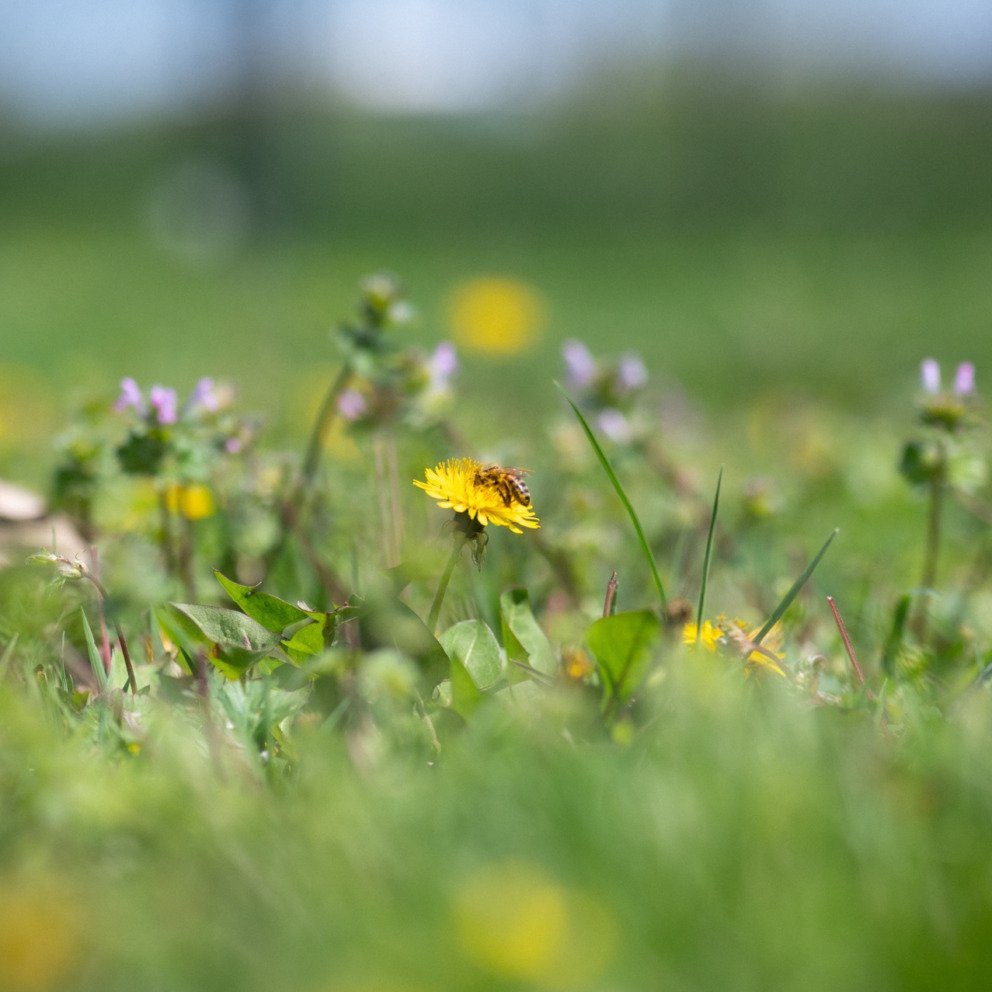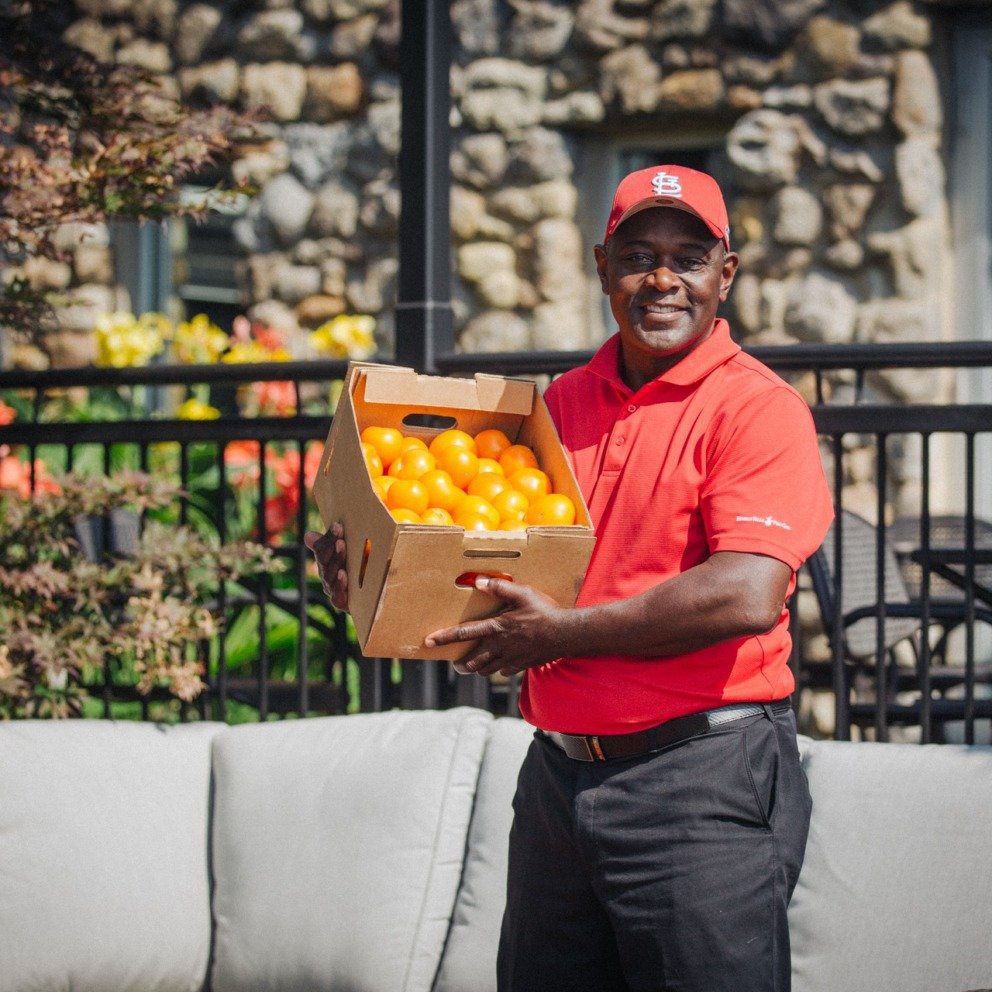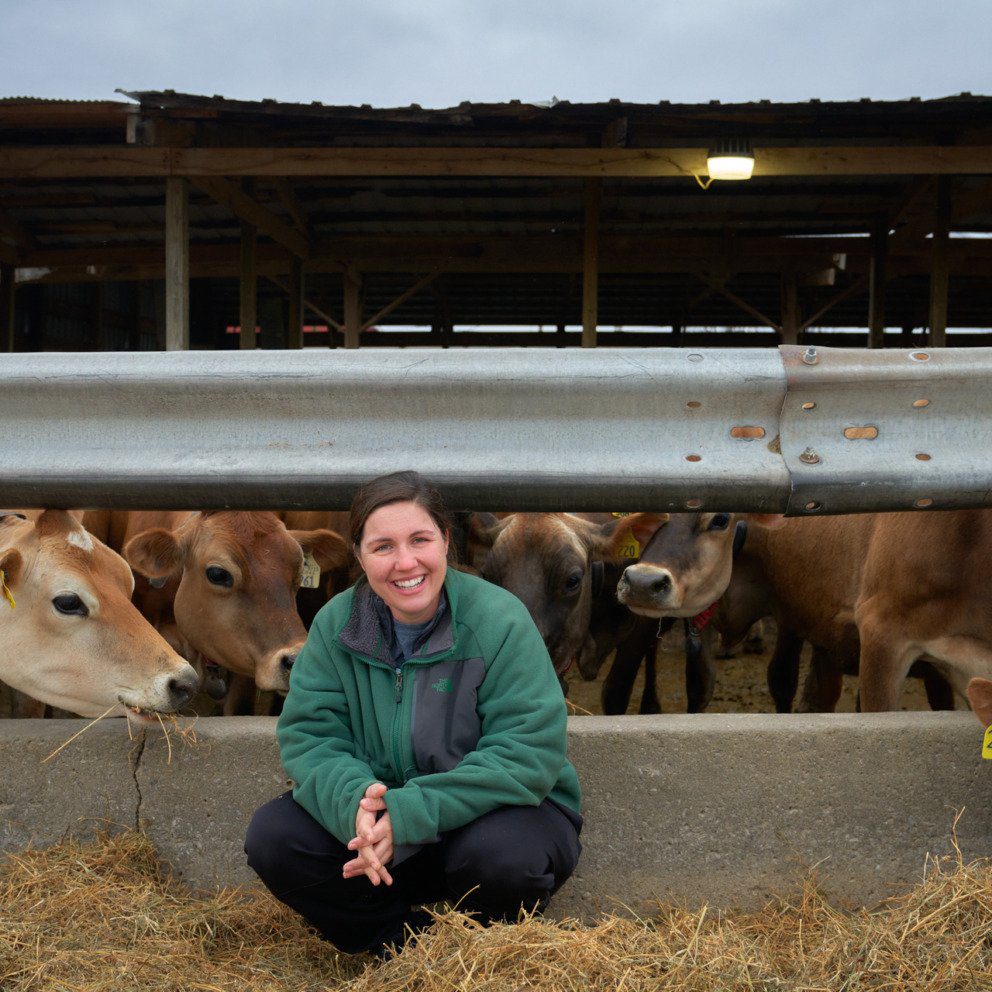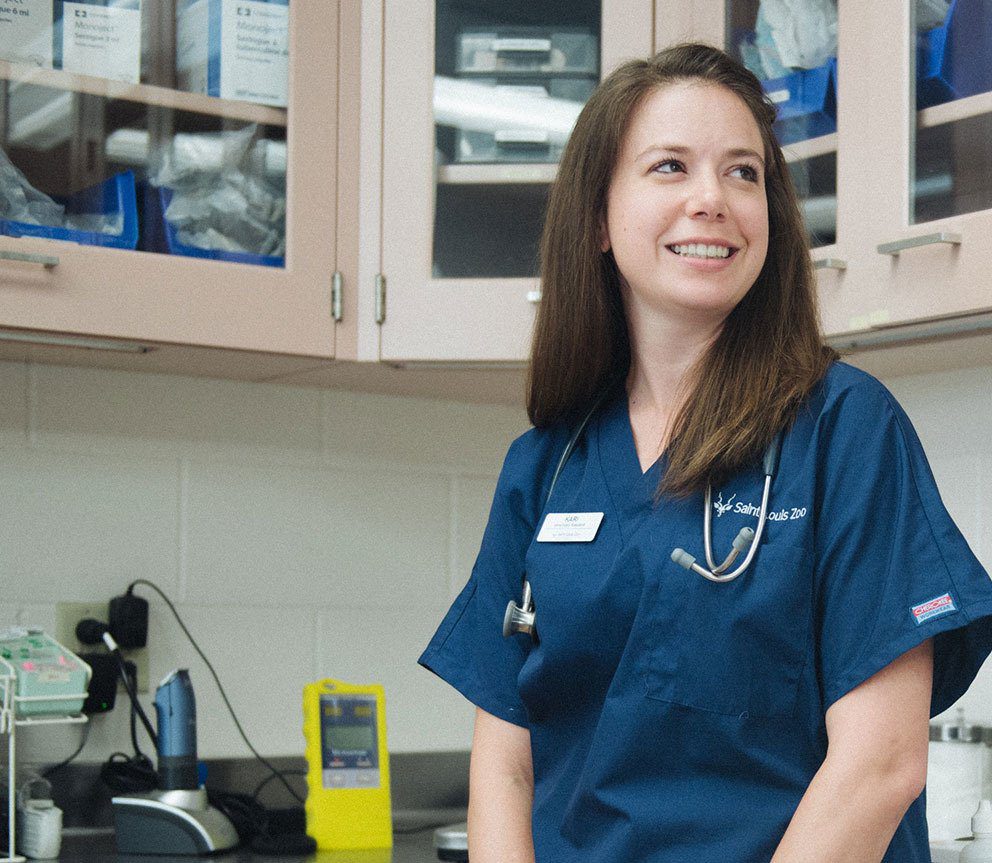Hive Mind – Part Two
A team of local scientists work together on how to improve produce yields in urban orchards and community gardens.
This story is the second of a two-part series. Read Part One here.
When most people think of bees, they think of honey bees, and rarely do they consider the role that bees play in their daily meals. And yet bees play a huge role in food and nutrition.
“One out of every three bites of food you take is bee-pollinated,” Saint Louis University Professor Gerardo Camilo, Ph.D., explains. “Not only that, but you can eat a lot of calories in the forms of pasta, and rice, and bread, but that provides very little nutrition. You need your fruits and your veggies – and you need salsa.”
And when it comes to pollinating fruit, Webster University Associate Professor Nicole Miller-Struttman, Ph.D., says honey bees actually aren’t that helpful.
“They’re not very good pollinators. They sneak in the side of flowers and they don’t ever touch the female reproductive parts,” says Miller-Struttman. “The native bees handle the flowers differently and that helps to make them better pollinators for things like apples and plums.”
Camilo and Miller-Struttman are part of a team of prominent local researchers collaborating on a vital project that explores the role that bees play in St. Louis’ urban orchards. The team is trying to understand the factors that contribute to variations in fruit tree yields from year to year with the goal of decreasing food insecurity in area food deserts. Thanks to a recent $633,000 grant from the U.S. Department of Agriculture last fall and partnerships with local community agriculture organizations, the team has been able to gather important information that will help them understand the role that both bees and humans have in every step of the pollination process.
The work may be thoroughly academic in approach, but it has real world implications for how people feed themselves in urban environments – something that Dean Gunderson focuses on as director of education for the urban agriculture nonprofit Seed St. Louis. Founded in 1984, the organization provides the tools and education that its participants need to grow their own food, with special focus on helping people cultivate urban orchards through its Giving Grove program. Now supporting more than 250 community gardens, Seed St. Louis is not simply about growing food; it’s a social movement.
“I think it’s important because being able to grow your own food is a thing that, for a lot of people, can be really empowering,” Gunderson says. “You’re not going to produce every calorie that you need to eat, but just the idea that you can grow your own food is really powerful, and for some people, it’s really important.
“Whether that’s for economic reasons to save money, or for cultural reasons, we work with a lot of groups that have certain foods that are important to them culturally that are difficult to find at a grocery store. Having the knowledge and the ability to grow their own can be really significant for them preserving their culture and their heritage. Being able to help people do those things is, for me, really meaningful to help them to be able to hold on to those pieces of themselves that they might not otherwise be able to reinforce.”
Gunderson and Seed St. Louis have been vital to the success of the urban pollination project. By connecting the researchers with local growers, the team has not only collected important data; they’ve been able to understand just how vital these are to the well-being of area residents.
“Community gardens and orchards are, I think, pretty important in fulfilling some of our food desert needs in St. Louis,” says Aimee Dunlap, associate professor of animal behavior at University of Missouri-St. Louis and director of the research project. “We have a lot of orchards and urban gardens in areas which are designated as food deserts. Not everybody can have a yard, and this provides a need for people to grow and cultivate things, because we know from lots of studies that humans are happier surrounded by green. Digging in dirt can help reduce depression, so these benefits are fabulous for people and for bees and other insects. I think it’s a win-win for everyone.”
Through their work, the urban pollinators team has already begun to make important connections about the role that humans play in their environments. Through his research, Camilo has observed the negative impact of the metro’s regrettable history of redlining, restrictive covenants and other racial segregation policies, but he’s also seen community members empowered to counter this social narrative through urban agriculture.
“You end up with this very explicit spatial segregation across the city, and that leads to a lot of other consequences on the distribution of pollutants and the distribution of biodiversity,” Camilo says. “One of the consequences we’re living with today with regard to redlining is the concept of the food desert. There are areas in which you don’t have groceries. It’s extremely hard to find fresh produce. You’re doing your grocery shopping at the mini mart, and therefore you have large amounts of obesity. Paradoxically, the same individuals have very low nutrition levels, so you have deficiency in vitamins and minerals. That brings itself this whole host of other health issues.
“But then, when you look at the distribution of community gardens and orchards, they tend to be concentrated in the same areas. It’s a way for the community to counteract the effects of those food deserts. It’s not enough but it’s a start.”
The research project is already having an impact through relationships the urban pollination team is building with area residents, helping educate St. Louisans on how they can improve biodiversity in their own community gardens or backyards.
“One of the things that is the best for bees is lazy gardening,” says Miller-Struttman. “I don’t mean to say wild and unkept, but when you cut back your stems, don’t cut them all the way down to the ground. Cut them a little bit and leave just a little bit so that they can nest there. Most bees (roughly 70 percent) nest in the ground, and a lot of the way that we treat the ground is that we walk on it. We make it compact. We put lawn down, which covers it up.”
Camilo elaborates on how a well-manicured lawn is at odds with biodiversity.
“The largest agricultural product in the United States is the American lawn, in terms of acreage, in terms of consumption of energy, in terms of consumption of water, and in terms of the consumption of chemical pesticides and chemical fertilizers,” says Camilo. “We’re spending all this time, effort, energy and chemicals into maintaining one species at a very specific height. Then we codify that into homeowners’ associations, into municipal policies and into home values. That’s a very artificial cultural construct.”
To build biodiversity, Camilo says homeowners should go against these instincts.
“Essentially, if there’s something you want to do, don’t do it. Don’t mulch, don’t fertilize. Don’t put mulch down, don’t mow, don’t fertilize and don’t use pesticides. Then all of a sudden — bees will start colonizing your yard.”
One of the most positive things the team of the researchers have uncovered is how vibrant the pollinator ecosystem is in the city’s urban areas. As they have observed, the same bee populations that are considered declining, threatened, and, in some cases, theoretically extinct in other areas, are thriving in north St. Louis. Camilo has identified at least two hundred species of bees within the city limits – 45 percent of the state’s entire bee population. Undoubtedly, the city’s robust and growing network of urban orchards are contributing to this vibrant pollinator ecosystem; through their research, the team hopes to be able to understand what it is these cultivators have gotten right, help them understand where they can improve and ultimately serve as a model for other cities as they look for ways to support growing populations in a way that is beneficial for both humans and the ecosystem we are a part of.
“Hopefully we have enough data that, at the end of the three years of this project, we can weave together an entire story of what happens to fruit production in these urban orchards in the city,” says Camilo. “And if we can identify how St. Louis achieved that, then we can find commonalities and patterns that can be replicated somewhere else.”
While the team does hope their findings can be a model for other cities, Dunlap boils down their core mission to a simple but significant goal:
“If we can find really simple ways that can help volunteer-run community gardens provide a greater fruit production, then that’s a huge win.”
Join the Story
- Listen to Nicole Miller-Struttman’s interview with St. Louis Public Radio about Shutterbee.
- Read more about Gerardo Camilo’s work in Saint Louis University’s alumni magazine “Universitas.”
- Check out the classes and events offered by Seed St. Louis.
